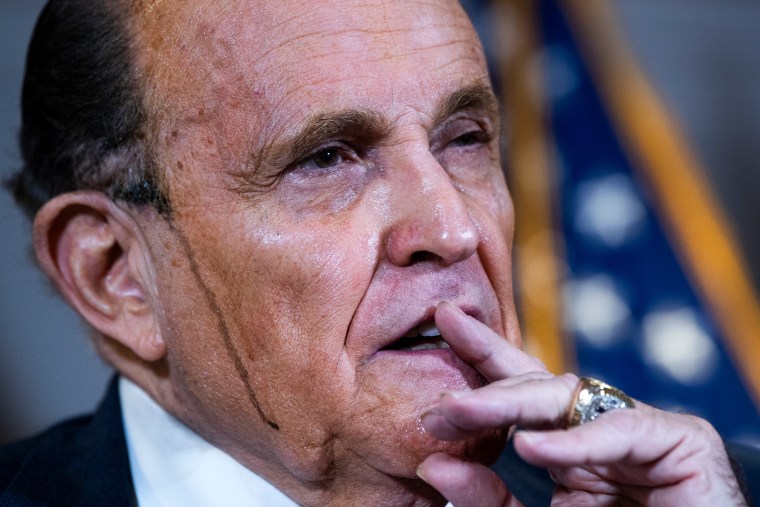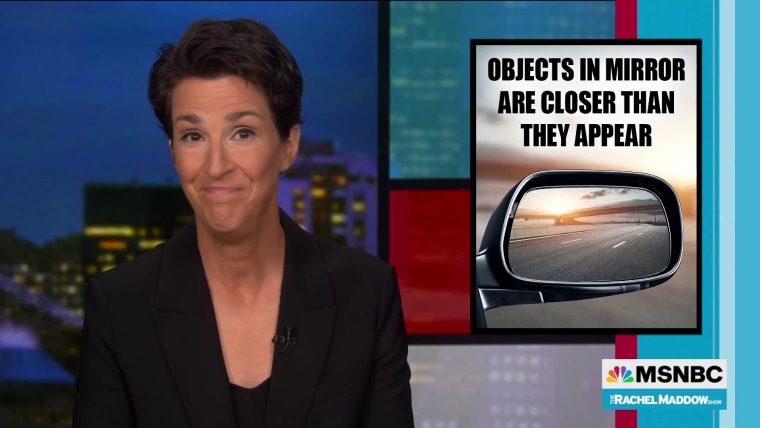Fulton County District Attorney Fani Willis on Monday charged former President Donald Trump and 18 other people with more than 40 counts related to his attempt to overturn the 2020 election results. It’s a case Willis has been building for 18 months, having launched her probe just one month after it became clear just how overt Trump had been in trying to subvert the will of Georgia’s voters.
One of the central components in the indictment involves a scheme to use a supposed quirk in election law to replace the state’s 16 presidential electors with an unauthorized alternative slate.
The inciting incident, so to speak, was clear: Trump’s now infamous call with Secretary of State Brad Raffensperger, where he insisted that officials could “find 11,000 votes” to flip Joe Biden’s win. But that was just the most straightforward element of the plan. One of the central components in the indictment involves a scheme to use a supposed quirk in election law to replace the state’s 16 presidential electors with an unauthorized alternative slate. Accordingly, a full 17 of the charges against Trump and his co-defendants are related to this plot.
At least eight of these fake electors have agreed to immunity deals with Willis. While the scheme was ultimately unsuccessful, Willis’ indictment makes it clear that the corrupt attempt to sow chaos in the counting of electoral votes involved Trump and his co-conspirators lying to everyone, including their own supposed allies, in his bid to retain power.
After every presidential election, members of the Electoral College meet to cast their votes for president. These electors are part of a slate chosen ahead of the election to support each of the candidates. Whichever candidate wins the popular vote has their slate of electors cast their votes, which are submitted to Congress for counting on Jan. 6.
That’s exactly what happened in every state, including Georgia, on Dec. 14, 2020. That should have been the end of it, but, under the direction of Rudy Giuliani, then Trump’s lawyer, the Republican slate of pro-Trump electors also assembled in Georgia and six other states to cast their votes.
Those votes didn’t have the force of law behind them. All of the court cases challenging the results had already been tossed out at this point, including at the Supreme Court on Dec. 11 when it rejected a suit from Texas challenging the results in Pennsylvania, Georgia, Michigan and Wisconsin. The Trump campaign’s legal team, which had been helping organize the elector slates, stepped back from the effort after that point. One campaign lawyer testified to the House Jan. 6 committee that he’d told his colleagues that “unless we have litigation pending like in these states, like I don’t think this is appropriate or, you know, this isn’t the right thing to do.”
But the plot still went forward. The “fake electors” cast their votes and signed their names to documents lawyer Kenneth Chesebro had provided to them. From there, the plan was to send those documents to Congress and the National Archives as the “real” electoral votes in those states. As Chesebro wrote in an email obtained by the Jan. 6 committee, “the purpose of having the electoral votes sent in to Congress is to provide the opportunity to debate the election irregularities in Congress, and to keep alive the possibility that the votes could be flipped to Trump.” (Chesebro and Giuliani are most likely two of the six unnamed co-conspirators special counsel Jack Smith described in the indictment.)
Admittedly, the “fake electors plot” sounds like something you might have briefly heard about in high school history class as you raced through the post-Civil War era. That’s fitting, because it’s based on a willful misreading of a 19th century law, the Electoral Count Act. Under the theory put forward by lawyer John Eastman — another unindicted co-conspirator — the vice president could unilaterally determine whether certain electoral votes were valid when Congress assembled to count them.
This was incorrect — and Congress modified the law last year to make that explicit — but it still formed the backbone of the attempt to either throw out the electoral votes of seven states altogether or send them back to their GOP-controlled state legislatures to potentially declare the Trump slates authentic. That included Georgia, where Trump’s allies had been leaning on the members of the Legislature for months in preparation of having it vote to affirm the 16 fake electors.
While members of the Trump campaign were publicly insisting that the efforts to arrange the fake electors were just a contingency plan, many of the steps taken to have them sow confusion took place in plain sight, despite some failed pleas from the plot’s organizers to have the electors work “in complete secrecy.” As I wrote last year, “many of these efforts, including the pro-Trump slates of electors in states he didn’t win, were dismissed as ‘political stunts.’ But here’s the thing: It’s only a ‘stunt’ if you know it’s not going to work. A ‘stunt’ is meant for show. It seems, though, that the Trump campaign was hoping its plan would be consequential; in other words, it lacked the presumption of failure.”
Which brings us back to the fake electors’ legal liability: For that reason, Smith and the Justice Department been eyeing the “fake electors” component of the plot for nearly a year now. Several of those Republicans who signed onto the fake documents have been called in to testify to a federal grand jury in Washington in exchange for limited immunity. Smith had also begun homing in on whether lawyers like Giuliani “were following specific instructions from Trump or others, and what those instructions were,” in coordinating the scheme, according to The Washington Post.
There has been a growing legal threat for the fake electors themselves at the state level, as well. Last month, Michigan Attorney General Dana Nessel charged 16 of them with eight felony counts each, including forgery for putting their names to fake documents. A similar probe is underway in Arizona. And while many have taken Willis’ offer of immunity in exchange for their testimony, there are still several who were previously told that they are targets in her criminal investigation.
They include former Georgia GOP chair David Shafer, Shawn Still and Cathleen Latham, all of whom joined Trump in being charged as part of the scheme under Georgia’s anti-racketeering, or RICO, laws. The three of them were also charged with impersonating public officers under Georgia state law for having "unlawfully falsely held themselves out as the duly elected and qualified presidential electors." Trump, Giuliani, Eastman, Chesebro and two others have been charged with conspiring with those fake electors "with intent to mislead" officials into believing they were actual electors. There are also several other charges related to: forging, and conspiring to forge, those fake electoral certificates, pressuring officials to accept the fake electors and submitting false statements related to the scheme.
All in all, Willis appears to have thrown the book at the participants in this case, finding every instance possible when Trump and his allies broke the law in trying to bring this scheme to fruition. It's a massive amount of evidence, a huge number of charges, and it will be fascinating to see which states follow Willis' lead to bring similar cases for this intensely well-documented attempt to steal an election.


